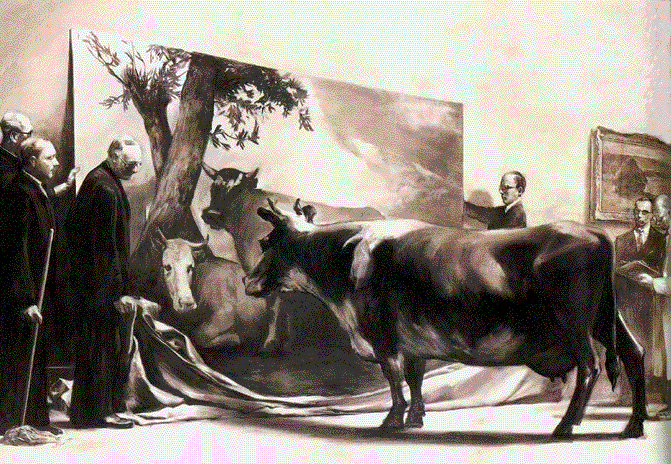Such is the case now with "sprites." The sprites I'm presenting below are some of the sprites designed as decorations for Chicago's Midway Gardens (1914-1929), a dining, drinking and amusement place on the city's south side near the University of Chicago campus. It was never really successful, at first due to being undercapitalized and later because of Prohibition (of alcoholic drinks in the USA 1920-33). Chicago's climate might have been another factor. There were several sprite designs, and some were preserved before Midway Gardens was demolished.
The architect for Midway Gardens was Frank Lloyd Wright (1867-1959), who claimed responsibility for the sprite sculptures. But the working sculptor of those sprites was Alfonso Iannelli (1888-1965) whose later career included industrial design. So who actually designed those sprites, Wright or Iannelli? Nowadays, Iannelli is usually given the credit. But Wright paid a great amount of attention to the ornamentation of his buildings and surely had strong ideas as to what those decorative sprites should like. He must have set the theme and must have approved of the final designs even if the unlikely case that he never made a sketch of their form and decorative details was true. That is, he probably was fairly deeply involved with the sprites and does deserve as much or more credit than Iannelli.
Whatever actually happened in the architectural and sculpting studios took place more than 100 years ago, so we will never know the true story with certainty.
Stylistically, the Midway Gardens sprites are of the geometric branch of Art Nouveau, as opposed to what might be called "organic" Art Nouveau that featured tendrils and other plant-related decoration. It was the geometric Art Nouveau that transitioned into geometric Art Deco (which also had a curved branch ... consider those deer and borzoi dog decorations).
Earlier this year I was in the Phoenix, Arizona area, where sprites (or reproductions) are found. Below are some photos I took.
Here are two sprites on the front lawn of the Arizona Biltmore Hotel (1929), a building where Wright served as a consultant to the architect of record.
A sprite found elsewhere on the grounds of the Biltmore.
Its pose is rigid, the face has a serious expression.
The sprites on the front lawn have tilted heads and they are smiling. Their decorations are different from those on the other sprite.
I spotted this sprite on the grounds of Taliesin West, Wright's winter stomping ground. It has the serious, rigid pose and for some reason is painted, the colors being American Southwest desert-related.


















+tussen+de+monsters+-+1966.jpg)
+-+1975.jpg)






























